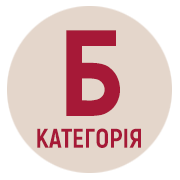PECULIARITIES OF USING THE “TRANSLATOR’S AMANUENSIS 2020 PLATFORM” BY TRANSLATORS AS A MEANS OF POSTEDITING
DOI:
https://doi.org/10.32782/2410-0927-2020-12-1Keywords:
translation tools, post-editing, computer-based translation, translation memory systems, machine translation, re-mediationAbstract
Given the importance of training translators to work in today's labor market, of particular interest are the achievements of scientists in such aspects of their training as information-thematic, information-search, informationtechnological. The article analyzes the publications of foreign authors on the Internet platform “Translator's Amanuensis 2020” as a means of editing translated texts, assesses the priority areas of research on this issue in the first decade of the XXI century. The role of the machine translation system in the professional activity of a translator as a means of interpersonal communication is analyzed. A comparison of the interaction of the machine translation system in the process of text production and traditional forms of editing human translators is made. It is stressed on the paradigm shift that occurs in translation and what happens to traditional media. Emphasis is placed on the growing interest in the development of translation-oriented tools and applications to improve the search for reliable sources of information, terminological resources, specialized dictionaries, and glossaries. It is emphasized that the development of cognitive characteristics of TA-2020 is based on cognitive research in the field of post-editing within the CASMACAT and SEECAT projects.
References
Alonso, Elisa and Elena de la Cova. 2016. “Machine and Human Translators in Collaborative Contexts”. María Azahara Veroz González and María Luisa Rodríguez Muñoz (eds) (2016). Languages and Texts. Translation and Interpreting in Cross-Cultural Environments. Córdoba: UCOPress 11–23.
Alonso, Elisa and Elisa Calvo. 2015. “Developing a Blueprint for a Technology-mediated Approach to Translation Studies”. Meta: Journal des traducteurs / Meta: Translators' Journal 60(1): 135–157.
Bolter, Jay David and Richard Grusi. 1999. Remediation. Understanding New Media. Massachusetts: MIT Press.
Chan, Sin-way. 2015. The Routledge Encyclopedia of Translation Technology. London/New York: Routledge.
Cho, Kyunghyun, Bart van Merriënboer, Dzmitry Bahdanau and Yoshua Bengio. 2014. “On the properties of neural machine translation: Enc3]oder-decoder approaches”. Proceedings of the SSST-8, Eighth Workshop on Syntax, Semantics and Structure in Statistical Translation. Association for Computational Linguistics, 103–111. http://www.aclweb.org/anthology/W14-4012.
Corpas Gloria and Marina Roldán. 2014. “Análisis de necesidades documentales y terminológicas de médicos y traductores médicos como base para el diseño de un diccionario multilingüe de nueva generación”. MonTI 7, 167–202. http://www.raco.cat/index.php/MonTI/article/viewFile/292105/380612.
Cronin, Michael. 2010. “The Translation Crowd”. Tradumàtica 8, 1–7. http://www.raco.cat/index.php/Tradumatica/article/view/225900.
Declercq, Christophe. 2015. “Editing in Translation Technology”. The Routledge Encyclopedia of Translation Technology. London; New York: Routledge 480–493.
Dobizha, N. 2018. The use of computer training program in the foreign language classroom. Informatsiyni tekhnolohiyi v osviti 2(35): 89–99.
Durán Muñoz, Isabel. 2010. “Meeting translators’ needs: translation-oriented terminological management and applications”. JoSTrans,The Journal of Specialised Translation 18, 77–93. http://www.jostrans.org/issue18/art_duran.pdf
Economist Intelligence Unit. 2012. Competing across borders. How cultural and communication barriers affect business. The Economist. http://www.economistinsights.com/countries-trade-investment/analysis/competingacross-borders/fullreport
European Commission. 2012. Europeans and their Languages. Special Eurobarometer 386. http://ec.europa.eu/public_opinion/archives/ebs/ebs_386_en.pdf
García, Ignacio. 2015. “Computer-aided translation”. The Routledge Encyclopedia of Translation Technology. London; New York: Routledge 68–87.
Jenkins, Henry. 2008. Convergence Culture: Where Old and New Media Collide. Revised edition. New York: New York University Press.
Krings, Hans P. 2001. Repairing texts: empirical investigations of machine translation post-editing processes. Kent: Kent State University Press.
Kushnir, Natalia and Osipova, Natalia, Natalia Valko, Liudmyla Kuzmich. 2017. “Review of trends, approaches and perspective practices of Stem-education for training center opening”. Informatsiyni tekhnolohiyi v osviti 2(31): 69–80.
Lavault-Olléon, Élisabeth. 2011. “L’ergonomie, nouveau paradigme pour la traductologie”. ILCEA Traduction et Ergonomie 14. https://ilcea.revues.org/1078
O’Brien, Sharon. 2006. “Eye Tracking and Translation Memory Matches”. Perspectives: Studies in Translatology 14(3): 185–205.
O'Brien, Sharon. 2014. Winther Balling, Michael Carl, Michel Simard and Lucia Specia (eds). Post-editing of Machine Translation: Processes and Applications. Newcastle: Cambridge Scholars Publishing.
PACTE. 2003. “Building a Translation Competence Model”. Fabio Alves (ed.). Triangulating Translation. Amsterdam: John Benjamins 43–66.
Pym, Anthony. 2012a. “Translation Skill-sets in a Machine-translation”. 16th Symposium on Interpreting and Translation Teaching. Fu Jen Catholic University, Taiwan. http://usuaris.tinet.cat/apym/online/training/2012_competence_pym.pdf
Torres Domínguez, Ruth. 201). “2012 Use of Translation Technologies Survey”. Mozgorilla. http://mozgorilla.com/en/texnologii-en-en/translation-technologies- survey-results/
Weiser, Mark. 1993. “Ubiquitous computing”. Computer 10, 71–72.
Zaytseva, Tatiana and Arkhipova, Tatiana. 2014 “Cloud technology as a way of Ukrainian education development”. Information Technologies in Education 19: 54–61.
Zhang, Chuxian. 2016. “Use and perceptions of Chinese electronic tool Youdao”. PhD diss., Universidad de Pablo de Olavide.
Boyko, Olha. 2019. “Vykorystannia prohramy Microsoft Office Excel dlia linhvistychnoho analizu tekstu”. Naukovyi visnyk Mizhnarodnoho humanitarnoho universytetu. Ser.: Filolohiya 38(3): 24–29.
Vakulchyk, Olena, Sahan, Oleksandr. V. 2013. “Vykorystannia Smart Board yak interaktyvnoho zasobu pid chas orhanizatsii urokiv anhliyskoi movy u 10 klasi”. Informatsiyni tekhnolohiyi v osviti 14: 100–109.
Hridnyeva, Svitlana and Honcharenko, Natalia. 2018. “Mashynnyi perekladach chy lyudyna-perekladach?” Naukovyi visnyk Mizhnarodnoho humanitarnoho universytetu. Ser.: Filolohiya 37(4): 144–146.
Hurzhiy, A. and Kartashova, L. 2013. “Pro problemy nastupnosti navchannya informatsiynykh tekhnolohiy u shkoli y vyshchomu pedahohichnomu navchalnomu zakladi”. Informatsiyni tekhnolohiyi v osviti 15: 11–19.
Dolynskyi, Y. 2013. “Dosvid vykorystannya novitnikh informatsiynykh tekhnolohiy u pidhotovtsi maybutnikh perekladachiv v universytetakh Velykoyi Brytaniyi”. Informatsiyni tekhnolohiyi v osviti 17: 91–98.
Zubenko, T. 2018. “Informatsiyni tekhnolohiyi v navchanni anhliyskoyi movy yak inozemnoyi v systemi osvity Spoluchenykh Shtativ Ameryky”. Information Technologies in Education 1(34): 34–47.
Pradivlyannyy, M. 2008. “Vprovadzhennya novykh form orhanizatsiyi navchannya inozemnym movam na bazi zasobiv suchasnykh informatsiynykh tekhnolohiy”. Teoretychni pytannya osvity ta vykhovannya. Kyiv: KNLU, 37: 77–82.
Spirin, O., Luparenko, L. And Novytskyi, O. 2017. “Protsedura vprovadzhennya elektronnoho naukovoho zhurnalu z vykorystannyam prohramnoyi platformy Open Journal Systems”. Information Technologies in Education 3(32): 40–60.
Turysheva, O. and Zabiyaka, D. 2018. “Funktsionalnyi pidkhid do perekladu kontentu veb-saytu”. Naukovyy visnyk Mizhnarodnoho humanitarnoho universytetu. Ser.: Filolohiya 35(2): 93–95.







